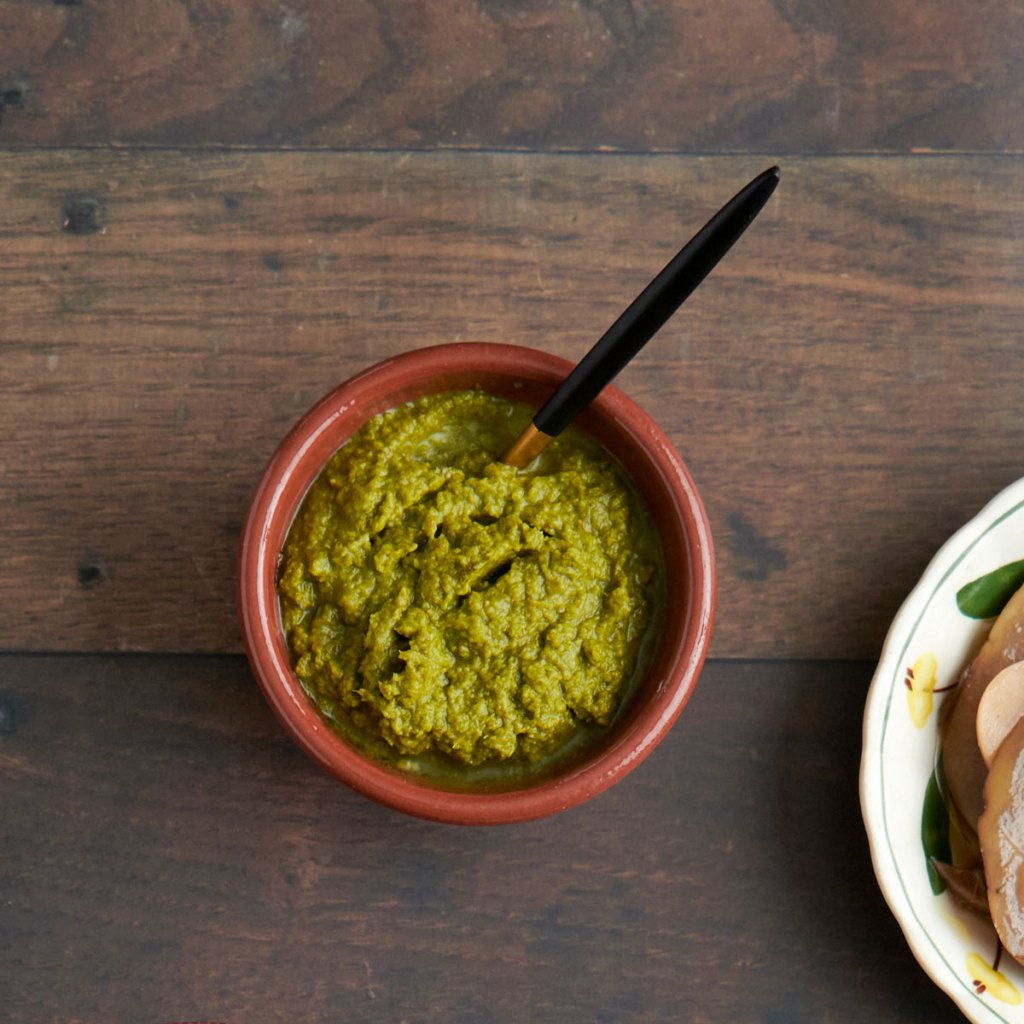Reduce Your Food Waste with Fermentation
Go green by using your surplus cilantro to make a tasty Fermented Cilantro Coconut Sauce. Don’t like coconut? Simply omit it.
A whole lot of good food is wasted every day—globally, about one-third of food doesn’t ever make it to the table. Fermentation is one answer to reducing the food waste in our homes, schools, and restaurants. Small steps, taken by many, lead to big changes for the environment.

Plus, fermenting is fun. Each batch is a little science experiment that you get to eat. Like a potted plant or garden bed, ferments require some basic care and tending, but appreciate extra love. They do their own thing and you get to be part of it. You nurture them, maybe you talk to them, certainly you watch them change over time, and then you eat them.
If you are new to fermenting, here’s an easy-to-make Shockey family favorite recipe you can make with your surplus cilantro.

Fermented Cilantro Coconut Sauce
yield: about ½ pint (473 ml)
This sauce is a staple in our fridge. For years we made it without the coconut and loved it; it was bright and sour and often began a salad dressing. So, if you don’t like coconut, feel free to omit it. But once we fermented it with coconut milk, we never looked back. It becomes rich and creamy, with lighter acid notes. The color stays much brighter. You can make it spicy with jalapeños or mild with green bell peppers, or mix it up.
At nearly every meal at our house, someone says, “Grab the green yummy sauce.” We admit we might have a problem. Therein lies another problem: We have never managed to hide and store this sauce long enough for a true test of shelf life in the fridge. We know you’ve got at least a month of goodness.
Ingredients:
- ½ cup (118 ml) creamy coconut milk
- Juice and zest of 1½ limes, or ¼ cup (59 ml) lime juice
- ½ large green bell pepper or 2 jalapeños, seeded and roughly chopped
- 3 cloves garlic, peeled
- 2 scallions, roughly chopped
- 1 teaspoon (6 g) unrefined salt
- 1 bunch cilantro (about 3.5 ounces/100 grams), trim just the ends of stems and rough chop
Directions:
1. Place the coconut milk, lime juice and zest, bell pepper, garlic, scallions, and salt in a high-powered blender, if you have one, or a food processor. You want the liquid at the bottom so that every ingredient blends well. Adding the cilantro in two or three batches, process until you have a creamy sauce.
2. Pour the sauce into a jar that leaves a couple of inches (3 cm) of headspace. You will not see any separation of the brine. It is too saucy to place a weight or follower on. Tighten the lid to seal.
3. Set aside the jar, somewhere nearby and out of direct sunlight, in a cool spot, and let ferment for 7 to 14 days. Burp daily (complete details on burping are available in Fermented Vegetables 10th Anniversary Edition), or as needed. If you see separation or bubbles, shake the jar or open it and give the contents a stir. The sauce is ready when it is pleasingly sour. The coconut will get thicker and more creamy, like yogurt.
4. To store, transfer to the refrigerator, where the sauce will keep for at least 1 month.
Excerpted and adapted from Fermented Vegetables 10th Anniversary Edition © Kirsten K. Shockey and Christopher Shockey.
This updated and revised bestselling guide to fermenting vegetables shares 65 new recipes, 8 new vegetable and fruit entries, 12 new producer profiles, 4 new fermentation techniques, and a greater emphasis on zero-waste processes.
Since the first edition of Fermented Vegetables was published in 2014, enthusiasm for fermentation has bubbled over—in part, because of the ongoing research into the importance of gut health. Unlike other forms of food preservation, fermenting offers the benefit of boosting gut health while introducing unique flavors into ordinary dishes. Kirsten and Christopher Shockey have been at the forefront of the fermentation movement and are two of its most widely respected teachers. Fermented Vegetables has become the go-to reference for people who want to start fermenting; its broad scope, accessible recipes, and attractive package, combined with the Shockeys’ authority, are a winning combination.
The second edition of the book builds on the success of the first, with new techniques like using Japanese pickle beds and turning ferments into seasoning pastes and powders. It includes 65 new recipes; other recipes that utilize fermented foods have been revised to minimize the use of animal products and alcohol. In addition, the authors have written 8 new fruit and vegetable entries and 12 new profiles, which feature producers from around the world. All information about the science of gut health has been updated to reflect the enormous amount of research that has been done over the last decade.











